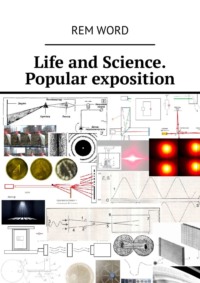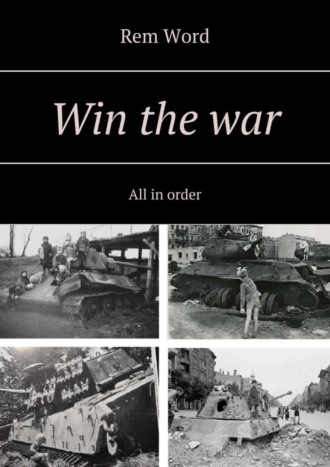
Полная версия
Win the war. All in order

Win the war
All in order
Rem Wоrd
© Rem Wоrd, 2019
ISBN 978-5-4496-6263-7
Created with Ridero smart publishing system

Our task is to win the war. Of course, for this you need to carefully examine the faded, worn maps of the previous alignments of forces, battles and victories. Imagine that we have conceived to make a documentary, useful for civilization. The presented narrative, a set of pictures with comments is the basis of the work. … In the center of the 1940 Europe map, Germany is highlighted in brown. In fact, by this time it makes up the top of a huge spatial triangle. The countries below, to the left and to the right are either included in the Axis bloc, or, like Turkey, take a wait-and-see pro-German position. With the dominance of the Germans only Britain strongly disagrees. Island Misty Albion seems small. However, England rules the loyal colonies and dominions in one quarter of the earth’s land. Its rival and ally France after the devastating First World War, although winning, but loses morale. The French manage well with their own colonies, constituting about 15% of the land. However, the words «Somme», «Ieper», «Verdun» cause them to tremble. In 1918, Parisian politicians, fearing huge losses, refused to «put on» Germany on its territory. Hard Versailles Peace – Covenant on the surrender of the undefeated enemy. So, in 1918, the German soldiers left the position of 100 km. from paris. They leave the lands of the friendly former Ottoman Empire and many European countries without a fight. Russia is a special article. Presumably, leaving 40% of the European territory of the greatest continental power, the German soldiers are thinking about how to return here. In 1933, according to the results of the popular vote, Adolf Hitler came to power. Almost 45% of the seats in the government, 95% – 98% in banking and book publishing, 36% in heavy industry, sooner or later, are left by the Jews (0.7%). The ethnic Germans now believe that, since the Russian people remained subjugated by the Semites (constituting hardly 1.5% of the population), now they themselves, following the Bolsheviks, can seize the whole USSR. This conviction is whipped up by chemical «energetics» – legally, amphetamine distributed in various forms and huge quantities.

We do not know the whole kitchen of political struggle in pre-war Europe. It seems that, until a certain time, everything that happens in Germany, the United Kingdom is like. After the «Munich Agreement» with this center of power, the Sudetenland is transferred to Germany with all defensive installations. These territories, inhabited by 90% by ethnic Germans, lose the Second Reich during the first Great War. Skip Soviet aircraft to help the Czech Republic refuses to Poland. Further, on March 14, 1939, Hitler summoned Czechoslovak President Emil Gahu to Berlin and proposed a protectorate. Willy-nilly, the President has to agree. European Neighbors Take Independent Education
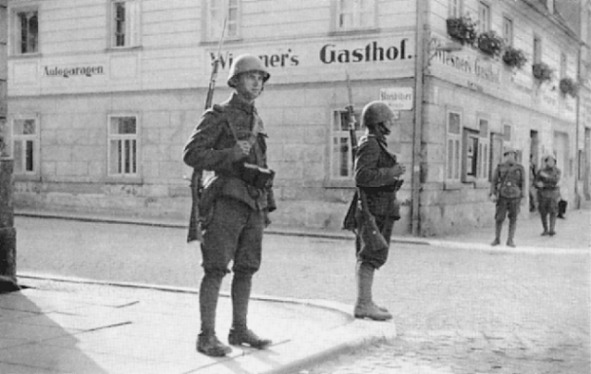
Resistance to the Wehrmacht has only one garrison of the Czech Republic, with the commander of which did not manage to contact the authorities in time. In the course of the forty-minute battle, twenty-four German soldiers are killed or injured. On the photo – Czech soldiers patrol the unreliable German quarter (until known agreement)
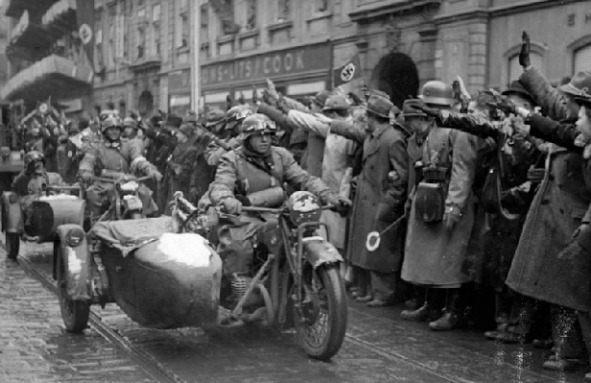
In addition to the 3.5 million ethnic Germans, Germany gets the Skoda plants and six hundred fully ready-to-use, quite good at that time 38 (t) tanks. England returns to the occupied country (that is, Germany already), the gold reserve that was previously exported – 1.4 billion marks. Slovakia becomes an independent state after it transfers the southern territories to an ally of Germany, Hungary, inhabited by Hungarians by 87%. Photography – German motorcyclists in Prague, March 15, 1939
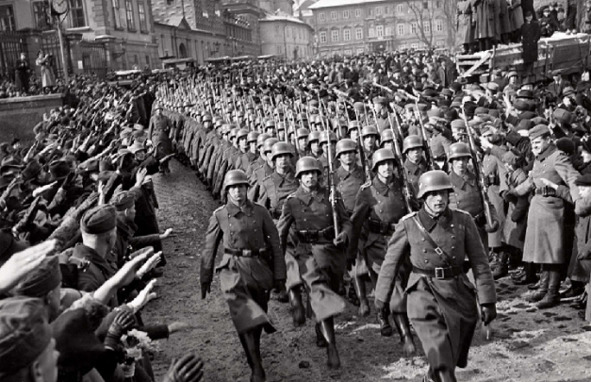
The parade of the German fascist troops in Prague, spring 1939. Still just beginning
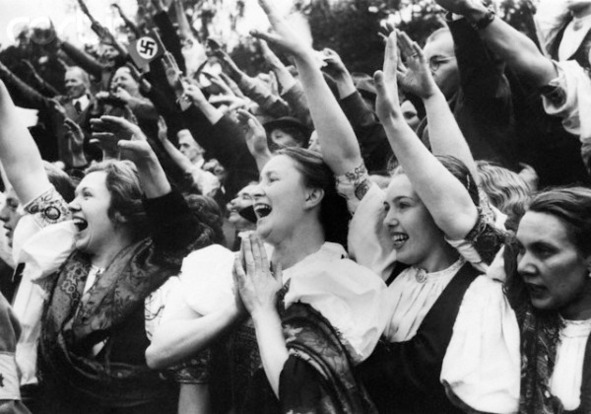
Ethnic Germans of ex-Czechoslovakia in national costumes are met by German troops.
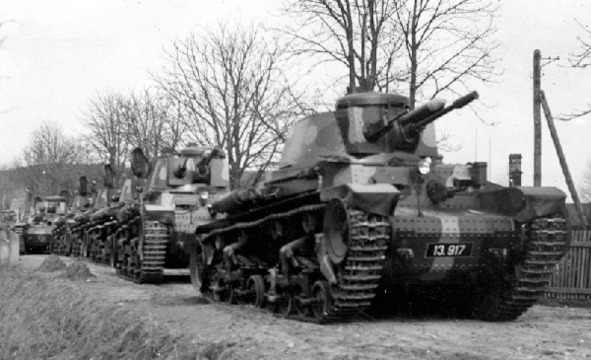
rophy tanks Czechoslovak production LT vz.35 before being sent to Germany. Weight 10.5 tons, forehead hull, turret 25 mm., Lateral booking 16 mm. 37 mm cannon., Two machine guns. Total for 1939 produced 424 of these, very good for its time machine
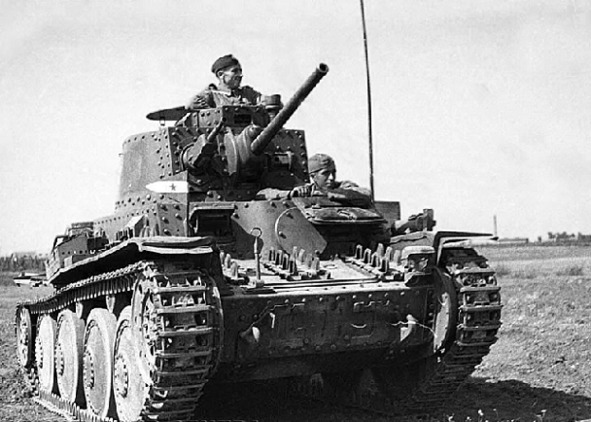
Czech T-38 tank, 25 mm. armor, 37 mm. gun, suspension close to the Christie system. Produced more than 600 units. A rather successful armored vehicle is used in all subsequent Wehrmacht campaigns, until 1942.
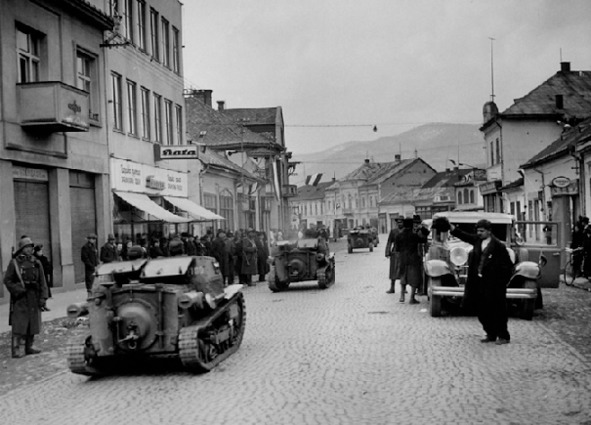
The Hungarian tankettes of the Italian production Ansaldo enter the Czech city of Hust, 1938.
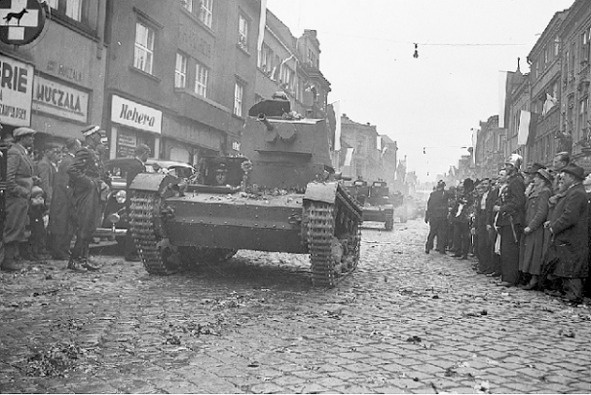
n the midst of the Sudeten crisis, Poland introduces its troops into the Cieszina region belonging to Czechoslovakia. Ethnic Czechs have long lived in these territories. The abundant influx of Polish migrant workers and entrenched immigrants of Galicia changes the composition of the region, although it does not level it: 80 thousand Poles, 120 thousand Czechs, 27 thousand inhabitants of other nationalities. Poland can capture the Cieszyn region – and only because of this it does. On the photo is a Polish tank of English production Vickers Mk. E Type B in the Czech town. The mass of armored vehicles 7.2 tons, armor 13 mm., 37 or 45 mm. a gun
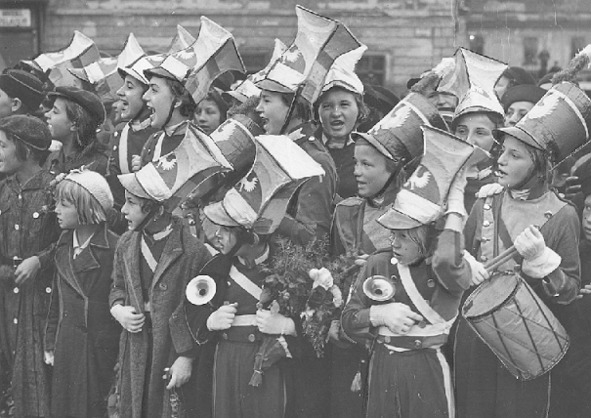
From October 1, 1938, Czech troops depart from the border. Poland receives 227 thousand people speaking a mixed dialect and 805 square meters. km territory. Photography – ethnic Poles of the Cieszyn region in festive costumes meet Polish troops
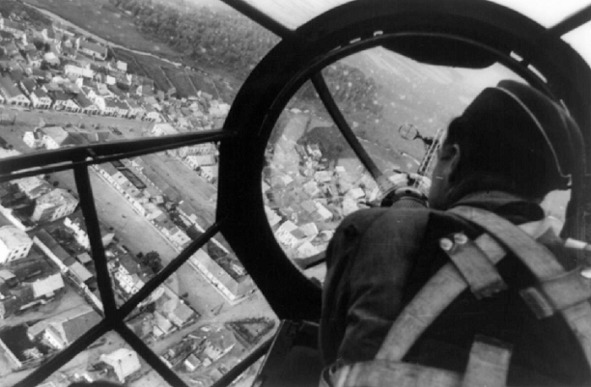
Very soon the rejoiced Pospolit was delighted with the great fall. The territories of Poland acquired by it at the expense of Germany under the Versailles Agreement (West Prussia and part of Silesia) prevent the Reich from joining East Prussia, the «cradle of German militarism». After negotiations on the creation of a land corridor, or at least the transit of goods through Poland without bureaucratic obstacles, on September 1, 1939, the invasion starts simultaneously from Germany, Slovakia and Prussia. The Polish air force, having existed for three days, is shooting down 130 Luftwaffe planes. From September 22, the bombing of Warsaw begins. Under the roar of the sirens, 1,150 aircraft dropped 4,500 tons of bombs. Already on September 28, the Polish military command (the civilian government takes refuge in France) signs the act of surrender. The photograph is a view from the cabin of a German Junkers-88 bomber on the suburbs of Warsaw). The Germans are not afraid of Hitler. The bottom line is that they like to do it.
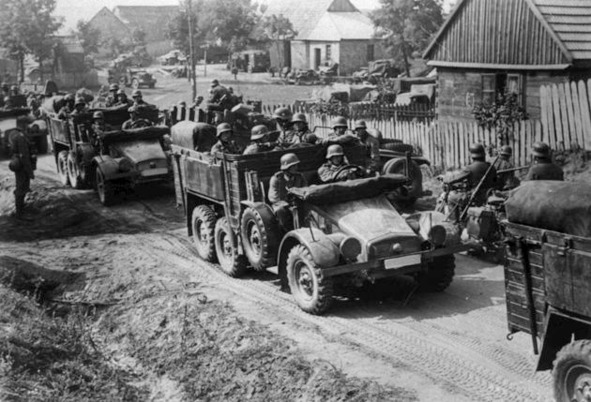
German troops in Poland, 1939. The thesis of the weak mechanization of Wehrmacht infantry units is being discussed in modern historical literature. However, as you can see, this is not quite true.
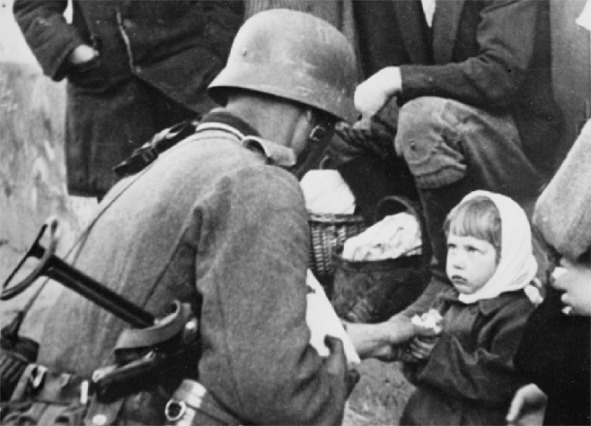
A significant part of ethnic Poles consider themselves to be an offshoot of the ancient Germanic tribe, or descendants of Iranian-speaking Sarmatians, but not Slavs. For some unknown reason, the unification of forces that has increased since 1938, 90 million Germany, and 35 million Poland, for their joint campaign to the East, will not take place. Otherwise, the USSR and its Anglo-Saxon allies could hardly count on winning in this war. Staged photography – a German soldier treats a wary Polish girl
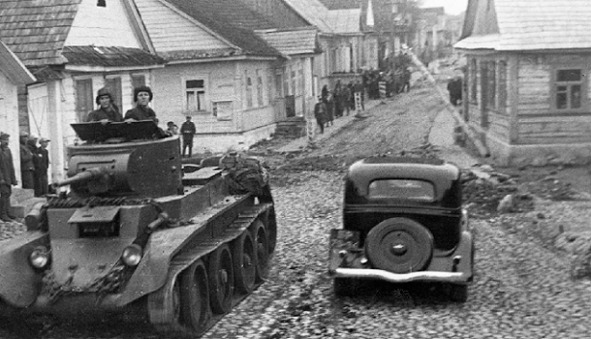
Since September 17, Soviet troops have entered Poland. Their goal is the return of Western Belorussia and Western Ukraine captured during the Russo-Polish War of 1920, the safety of the Belarusians, Ukrainians and Jews who are there. Main idea. If Poland shows courage in opposing Hitler, France and England are actively helping her, the Wehrmacht will meet a fitting rebuff, and the status quo is observed by the USSR. The obvious victory of the Germans, inclined, of course, to occupy the whole territory, means entry into the game of the Red Army. A part of Poland is Vilensky (Vilnius) region with 490 thousand inhabitants are transferred to Lithuania. Some territories are being transferred to another satellite of Germany – Slovakia. The 78,000 refugees (including Jews) who refused to accept Soviet citizenship from Poland occupied by Germany are deported back, or receive 20 years of camps. Loss of parties. Poland – irrevocably 63,000 soldiers and officers in battles with the Wehrmacht, 420,000 in German captivity Nearly 230,000 are captured by the USSR (privates and non-commissioned officers are dispersed home). In 1942, most of the Polish military, in agreement with England, bypassing Iran, joined the British forces, forming the army of generals Anders or Sikorsky). Polish air forces lose all their 360 aircraft of various types. Germany – 15,000 killed, as well as 320 armored vehicles and 285 aircraft (as a result of air crashes, air defense operations and fighters). Red Army – 2000 dead, 17 tanks and 10 aircraft. Irretrievable losses of the Poles in the battles with the Red Army – 3000. Slovak army: 18 people. The photograph shows the Soviet tank BT-7 in the Polish city of 1939.
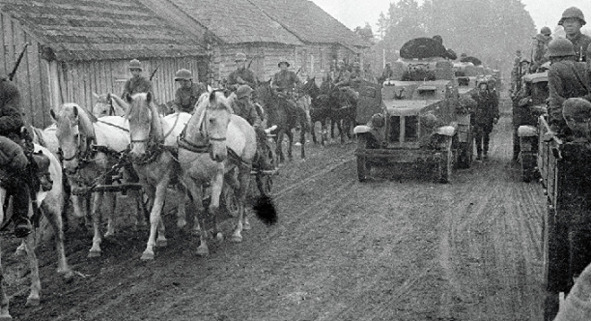
Soviet troops in Western Belarus. The republic reunites and gets rid of violent polonization. At the same time, according to Stalin’s decision, 100,000 wealthy (hard-working) peasants, entrepreneurs, and landowners are sent to the Gulag «for re-forging». The same statistics for Western Ukraine. In the center of the photo is the Soviet armored BA-10. Weight 5 tons, crew of 4 people, armor 10 mm., Gun 45 mm., Two machine guns. In subsequent battles with the Wehrmacht, this machine will manifest itself mediocre. Made 3 400 units. Repression (a beautiful word that does not convey the essence of the phenomenon) affects the commanding staff of the Red Army. When it comes to this, many historians and writers transfer the conversation to Mikhail Tukhachevsky. This Marshal (just like everyone else) makes some mistakes and «excesses» in the Civil War, military construction, and serves as a kind of example of the «correct action» of the punitive system. A senior officer is bad or good, arrest, torture, execution, have a negative effect on the army and the people. Of the five marshals of the Soviet Union in the dungeons of the NKVD killed three. Their fate is shared by 15 thousand other military leaders. Excessive mind is an aggravating circumstance. From the memoirs of General A. Gorbatov «Years and Wars»: «… Three sat at the table. At the chairman, who was sitting in the middle, I noticed a wide golden stripe on the sleeve of a black uniform. Captain Rank 1, I thought. The joyful mood did not leave me, for I only wanted to see the court in my case. The trial lasted four to five minutes. My last name, first name, middle name, year and place of birth were verified. Then the chairman asked: – Why did you not confess to the investigation of their crimes? – I did not commit crimes, because I had nothing to confess, I replied. «Why are ten people already confessed and convicted shown on you?» – asked the chairman. At that moment I was in such a good mood, and I was so sure that I would be released, that I dared to take liberty, and later I regretted it bitterly. I said: – I read the book «The Workers of the Sea» by Victor Hugo. It says: once in the sixteenth century, eleven people were caught in the British Isles, suspected of having links with the devil. Ten of them admitted their guilt, though not without the help of torture, and the eleventh did not confess. Then King Jacob II ordered the poor man to cook alive in a boiler: the fat, they say, would prove that this one also had a connection with the devil. Apparently, «I continued,» ten comrades who confessed and pointed at me experienced the same things as those ten Englishmen, but did not want to experience what was destined to the eleventh. The judges, grinning, exchanged glances among themselves. The chairman asked his colleagues, «How is everything clear?» Those nodded their heads. I was taken into the corridor. Two minutes passed. I was again brought into the hall and a sentence was announced: fifteen years in prison and a camp plus five years of defeat in rights…It was so unexpected that I, where I stood, there and sank to the floor. On the same day, they transferred me to Butyrka prison, to a cell where only convicts were waiting to be sent. Upon entering, I greeted loudly and introduced myself in a military way: "Kombrig Gorbatov." After Lefortovo, this prison seemed to me to be a sanatorium. True, in a cell designed for twenty-five people, there were more than seventy, but here they were given a daily half-hour walk instead of ten minutes every other day in Lefortovo.
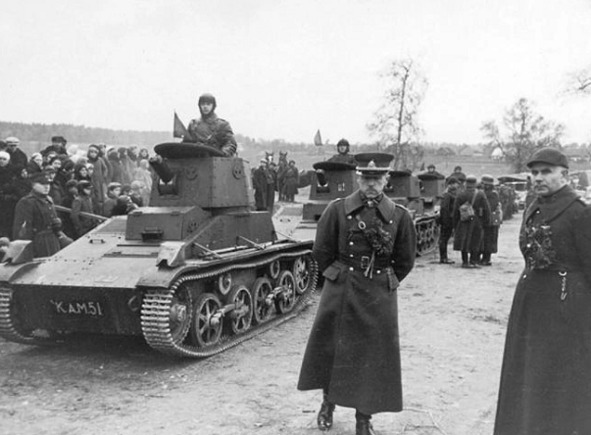
Lithuanian tanks, probably of their own production, on the border with the Polish Republic. The servicemen are awaiting an order to begin the occupation. The prize for this campaign, with the permission of the Germans, is the Vilnius region, the price paid for humiliations and ultimatums from Poland
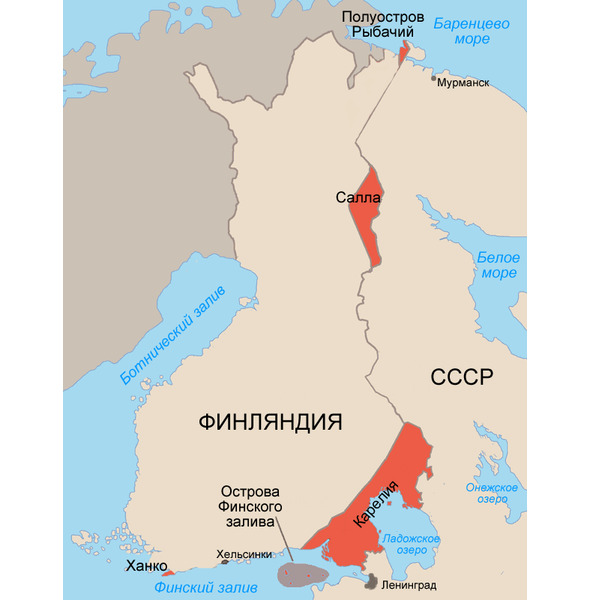
Ideas of Great Finland uniting the peoples of the Finnish-Ugric group; Finns, Karelians, Estonians, from the Gulf of Bothnia to the Ural Mountains, spread with the separation of Finland from Russia in 1918. The Government of Suomi sends a petition to the warring Germany. The bottom line: the conclusion of the Peace of Brest with the condition of East Karelia’s accession to Finland. During their own civil war, April 29, 1918, the White Finns capture Vyborg. The Nazis arrange the genocide of all people who do not speak Finnish (retired military, high school students in Russian uniform, and even Poles). Three thousand people die. Two weeks later, on May 15, the government of Finland declares war to Soviet Russia. Its troops occupy, in particular, the Russian, from the sixteenth century, Pechenga. Later in «Petsamo» large reserves of nickel ore will be explored. From 1935, their industrial development by the Anglo-American corporations will begin. The Finnish military partially blocking Petrograd, contributing to the first great famine in this city. According to averaged data, 300 thousand people become victims of it, as well as the «red» terror. In the Mannerheim rate, a plan of «national uprisings» is being developed, Finnish instructors are singled out for creating hotbeds of insurrection. However, the plans of the field marshal to annex East Karelia, the Kola Peninsula and the attack on Petrograd, Germany does not support. After the Vyborg tragedy, joint operations to overthrow the Bolshevik government together with the Finns refused to conduct the White Army. By May 1920, the Red Army units were eliminating the puppet North Karelian state. In October of the same year, Finland and the USSR signed the Tartu Peace Treaty. According to this pact, in exchange for peace, Russia loses a part of its territories. In 1921, Helsinki unleashed the second Soviet-Finnish war. The divisions of the «forest partisans» commit sabotage and murder of supporters of Soviet power. The fighting ends in March 1922. A document is signed on ensuring the inviolability of the Soviet-Finnish border. About 30,000 people dissatisfied with the new order go to Finland. Right up to the end of the 20s, armed groups make raids on Soviet territory. Anyway, the mood in Finland does not seem friendly to the USSR government. The proposal of the Council of People’s Commissars of Commerce – assignment of the border from Leningrad at the expense of Finland, in exchange for twice the area of Eastern Karelia that exceeds the area. Rent Hanko Island to create a Soviet military base. Disarmament and demolition of the Mannerheim Line on the Karelian Isthmus. Finland rejects these conditions. On the map – the situation before and after the Soviet-Finnish (Winter) War
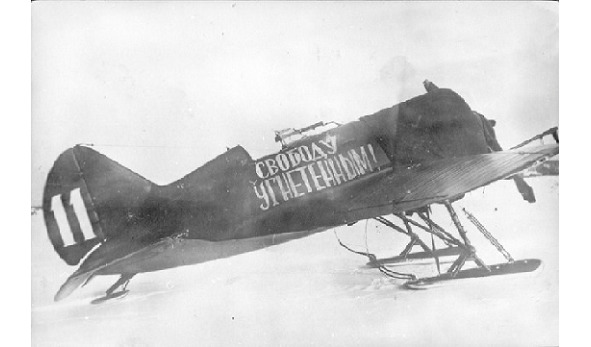
«Freedom to the oppressed» – such a slogan was put on board the I-16 fighter during the Third Soviet-Finnish War. Many citizens of the Soviet Union really consider Finnish workers and peasants an oppressed class. It seems that even Stalin, who suffers, I suppose, with a splitting of consciousness, believes that as part of the USSR, under the able guidance, the people of Suomi would live better. The intelligence network, adjusted to the needs of Dzhugashvili, helpfully confirms such a picture of what is happening. More plausible option. The dictator, as it is accepted by all dictators, collects all new territories.

Dot line Mannerheim 2nd generation, «millionth» (the name of the amount in the Finnish stamps spent on its construction). The thickness of the reinforced concrete walls is 2 meters, the length of the building is 30—40 meters. The usual armament is two 76 mm. anti-tank guns 37 mm. guns, machine guns. Addition – ditch, mines, barbed wire, concrete racks. In total, the 2nd generation pillboxes were built 7. Spring 1940 … Finnish Army Lieutenant Oiva Porras: «… Tanks that have passed out of holes, began to enter our sector of shelling. The gun fired a shot. The projectile hit the turret of one of the tanks was clearly visible. The tank turned left and stopped. Charge, sight, fire! Hit in the second tank, he stopped. A second after it hit, the tower hatch on the tank opened, arms and head in a leather helmet appeared from there. At that very moment, the tank engulfed the flames, the ammunition detonated, and the tank burned down. The flamethrower tanks continued to fight. One of them walked along the course of the message and drove up to Harkkil’s dugout, the second one had already stormed the Kelly stronghold. Sometimes the combustible mixture that the metal tank did not catch fire, and the target of the tank remained simply filled with fuel oil. After a moment, this tank headed through our trenches to the dugouts. At the same time, our anti-tank gun destroyed two more tanks in front of the Kelly team. The machine guns of the «Millionaire» were firing continuously, we also fired from our trenches with intense fire. Enemy infantry tried to move forward, not paying attention to the loss. Before us on the earth there were already many motionless black bumps and heaps of bodies. The enemy tried to support the advancing guns put forward to direct fire. They were shelling our firing points. Here and there shells exploded on the parapet. As soon as the flash of the shot was visible, the projectile was already breaking off at the target. With such a projectile, Yakkola and Sisto covered messengers. I think they did not even have time to understand what happened. At about noon I received a report that Harkkila was seriously wounded and his commander-in-chief was killed. The Messenger also reported that there were already many wounded and dead. The wounded were not evacuated, since the enemy tanks were among our positions, one tank was on the roof of the Harkkil dugout, and many more tanks were crawling back and forth near the road and in the rear. Part of our positions was captured by the enemy.
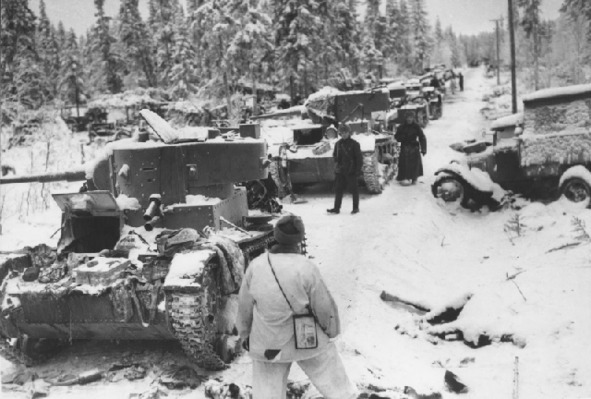
Military operations begin after the delivery of an ultimatum to Finnish diplomats on November 30, 1939, with shelling by the ships of the Baltic Fleet and the bombing of Helsinki. The Soviet Union is expelled from the League of Nations. European countries supply Suomi with weapons, including free of charge (350 aircraft, 500 guns) and volunteer troops. Two months advancing on forest roads columns of Soviet troops dissected by Finnish skiers, surrounded and destroyed. Photography – Soviet armored column defeated in Karelian forests. Finnish soldiers inspect frozen tanks T-26. December 1939
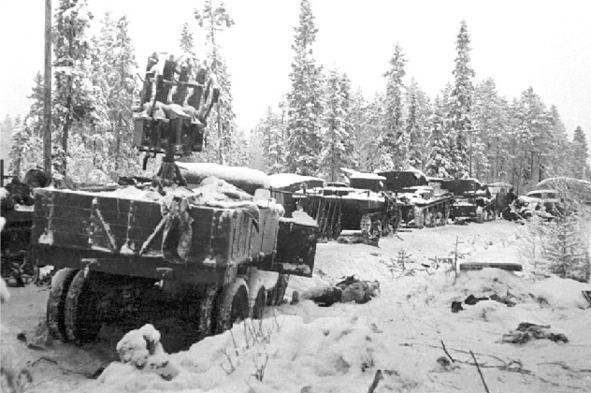
In February, having filled the troops with heavy artillery, tanks, and increased food allowances, the USSR achieved success in breaking the Mannerheim line. Almost a day before the vote in the British parliament on the war with the USSR, on March 13, Soviet troops enter Vyborg. Peace is made. The irretrievable losses of the Red Army – 130,000 people, 650 tanks, 640 aircraft. The Finns lose 26,000 people, with 450,000 refugees, as well as 62 aircraft. From the Finnish captivity returned, 4,354 people are being filtered by the GUGB NKVD. Only 450 of them are released. The rest receive from 5 to 8 years camps. The photo shows a Soviet armored column dissected by Finnish skiers into several parts and destroyed. In the foreground – a truck with anti-aircraft installation. December 1939
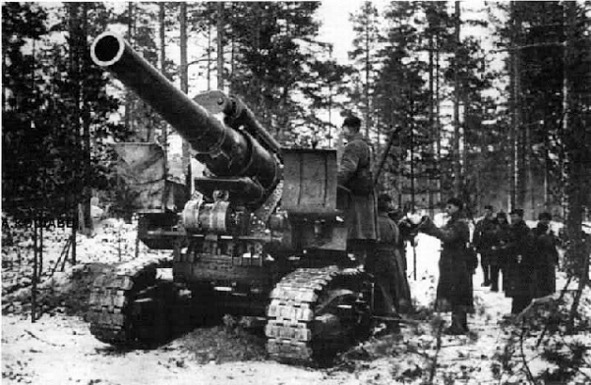
A large-scale military operation could have a special meaning if the USSR had kept Petsamo (Pechenga) with reserves of nickel ore, much-needed in the German military industry. However, the international community, including primarily the UK, is strongly opposed. Petsamo area is returned to the Finns. Those organize large-scale supply of nickel to the Axis countries. Pechenga will be part of the Russian Federation only in 1944. The photo shows a Soviet howitzer B-4. Caliber 203 mm. This is almost the main character of the Finnish War. The nickname «Stalin sledgehammer», or «Karelian sculptor», for the fact that a large-caliber gun turns Finnish pillboxes into a kind of avant-garde sculptures. The result of the action of the B-4 – if not breaking through the walls, then the psychological impact on the defenders of the DOTs. Many of them, after prolonged shelling of the B-4 go crazy. Karelian Isthmus, February 1940 … Corporal of the Finnish army Toivo Aholla: «… The shelling of our positions was moved to the depths (exactly according to the rules!) And the full strength of the armed forces of the Soviet Union fell on our positions. Games are over, everything was in earnest. About fifty tanks were at the front half a kilometer, the largest of which were eight meters long, three wide, and three high. They moved fairly quickly along a level field and fired continuous cannon and machine gun fire, despite the fact that their fire was inaccurate on the move. For tanks in several trains went a huge amount of infantry. Although the ground was already covered with snow, the Russians did not yet have white camouflage. For us it was a clear advantage, it was very clearly visible where to shoot. Our artillery made several volleys on the mass advancing on us, but in order to achieve at least some effect, it was necessary to launch ten times more projectiles!Our anti-tankists managed to “put down” several tanks in the neutral zone, some tank hit a mine, but there were enough of them after the losses. The bravest tankers crossed the trenches and headed towards our rear. Other tanks began to deliberately level the barbed wire fences with the ground, while others stopped and began to make passes in the teeth. The tanks that went to our rear were at a disadvantage, and our tank hunters immediately attacked them. The tank is bad enough for a close view, and a brave soldier hiding in a funnel or cell with an anti-tank grenade or incendiary bottle is a dangerous enemy for the tank. Towards evening, the shouting and moans of the wounded were heard from the neutral strip, among which “Comrade Medical Officer!” Was clearly heard … A couple of tanks that had broken through to the rear managed to return to their positions …



